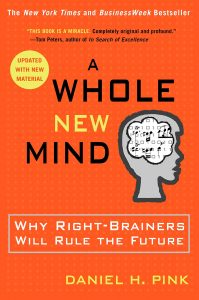
“Manifesto Labs” by Alex Dils is licensed under CC BY-NC-ND 4.0
Technology has never been my passion. Connecting with my students, encouraging them to connect with each other, and motivating them to become creative and critical thinkers…these are my passions. When I review top trends in education technology they often appear to be driven by economics and consumerism, like providing 1:1 devices, utilizing wearable devices, or purchasing augmented and virtual reality software. I often find myself wondering “Who wrote this?” and thinking “It definitely was not a teacher!” In light of my experience in the high-school classroom, my observations of students technological abilities, and the availability of funds in public schools I have created my own Top 5 Trends in Educational Technology.
1.Collaborative cloud computing: As Steven Lahullier writes in Top 10 K-12 Educational Technology Trends in Oct of 2018
The ability to collaborate on writing assignments, presentations, spreadsheets, etc. has proven to be an invaluable asset in K–12 education.
And, in my opinion, being able to access your work from any device without the fear of losing your work has been one of the most valuable advancement of technology in the past decade.
2.Global Learning: Utilizing technology to promote global collaboration to solve complex global issues has incredible potential to inspire students to be agents of change. As stated in Biggest Education Technology Trends of 2019,
students who have participated in global learning provide the proof – their discussions and collaborative projects have addressed worldwide problems like food scarcity, climate change, refugee crises and child labor.
3. Gamification: Tapping in to students enjoyment of playing video games to enhance and motivate learning seems like a no-brainer. As outlined in Top 10 K-12 Educational Technology Tools and The Biggest Education Technology Trends of 2019, games can be used to teach engineering principles, coding, and problem solving skills, as well as teach skills like mindfulness (for example, apps like Headspace and Calm)
4. Artificial Intelligence: Using devices like Siri, Alexa and Echo are becoming more and more common in class. The blog post The 9 Hottest Topics in EdTech predicts that AI will explode in schools in the near future, and has the potential to support learners in higher level thinking and learning. Students can utilize AI to gather information quickly to support new applications of knowledge.
5. Student-centered learning and Inclusion: The New BC Curriculum and the Technology for Learning Goals in School District #61 advocate for learner-centered and flexible, and many teachers are experiencing that student-centered learning is more successful than traditional practices. It is not surprising that student-centered schools like Pacific School of Innovation and Inquiry(PSII) in downtown Victoria and High Tech High in San Diego are attracting attention and gaining popularity. The blog post Top 6 Educational Technology Trends Right Now links the goals of student-centered learning and inclusion in the following quote:
Thanks to modern technology in education, we can really initiate custom teaching and learning methodologies and experiences in our present day educational infrastructure. With modern gadgets and interfaces, now one can initiate learning based on their need, preference, and availability.
My list is centered around improving mobility and student access, improving the quality of teacher and student work, enhancing personalized learning, and promoting critical thinking. The article Implications of Shifting Technology in Education lists 14 literature based current best educational practices, many of which are reflected in my personal Top 5 Trends in Educational Technology. My Top 5 Trends were strongly influenced by ideas presented in the book “A Whole New Mind: Why Right-Brainers Will Rule the Future” written by Daniel Pink.

This book outlines the shift in skills that are valued by North American employees in light of three driving forces:
- North Americans are living in abundance, and are looking for beauty and emotion.
- Off-shore workers will perform white-collar technology-related jobs for far cheaper, thereby forcing first world workers to focus on skills that can’t be done overseas.
- Computers have still not replaced many human aptitudes. As automation seems to be closing the door on many job opportunities, it is opening the door to several others.
Six essential Right-Brain-Directed aptitudes are introduced in Pink’s book that respond to the forces listed above:
Design: This skill is difficult to automate, and so valuable in business. It also brings joy and beauty to our lives in the creation of our living and work spaces.
Story: Story satisfies our need to be understood and to understand. Of course story contributes to our ability to relate to others, but it is also the cutting edge trait that determines a successful business. In a market business story is valuable when it helps consumers make personal connections to products, or facilitates the discovery of ones’ self through geneology, scrapbooking, or the creation of personal profiles.
Symphony: is rooted in the higher level thinking of making connections and recognizing patterns, and applying those observations to create something new. Symphony is the quality of entrepreneurs and inventors, problem solvers and artists. The characteristic of perspective and innovation will be highly sought after with the emergence of new and original jobs that fill a need that might not have been conceived or recognized as of yet.
Empathy:
Leadership is about empathy. It is about having the ability to relate to connect with people for the purpose of inspiring and empowering their lives.
-Oprah Winfrey
As of yet computers with emotional intelligence is still science fiction. It is what makes us human and fosters the meaningful connection we all crave. With the increased awareness of mental illness, empathy is redefined the approach to health care in North America and steering our medical professionals towards a more holistic approach.
Play: Today being busy is a badge many people wear proudly, and play is sought after with intention. One only has to consider the success of apps like “Calm” and “Headspace” to see the potential for technological games. It is so much more than a stress release or an activity that might help us achieve balance in our busy lives. Entrepreneurs are tapping into the unprecedented success of games like fortnite and minecraft to invent games that enhance learning, investigating, and problem solving skills.
Games are the most elevated form of investigation.
-Albert Einstein
Meaning: During the age of abundance the pursuit of the meaning of life has gained epic importance for many individuals: Gratitude, Spirituality, Rest, Mindfulness, Happiness. These qualities are driving an economy based on services rather than products.
Pink’s book suggests that North Americans relying on their coding skills or technological expertise may find themselves in a low paying and competitive market. With this in mind, it’s interesting to consider Top Trends in Educational Technology and how they might contribute to the sought after aptitudes outlined in Daniel Pink’s book. We say, or perhaps we’re told, that technology is the key to engaging and preparing students for the future…but I suggest it is simply a tool for enhancing the skills and qualities necessary and relevant in this new era. Technology is an import tool for assisting students and teachers in the acquisition of knowledge, however my goal is to assist my students in becoming creative and critical thinkers, capable of synthesizing and applying knowledge and proficient when working with others. Educators can be confident that creativity, people skills, and problem solving skills are qualities that will continue be in high demand. And coincidentally, these skills will also ensure that our learners can adapt and contribute to the epic pace of technological innovations.
References
Pink, D. H. (2006). A whole new mind: Why right-brainers will rule the future. New York, N.Y.: Riverhead Books.
Rene Schwarz says:
A good read. It brings an important question to mind: How accurate are predictions of not only future educational technologies but also the future needs of education?
As your post opened with questioning just who wrote these edtech blogs, it is a valuable skill to step way back to see the big picture of education, how its change is influenced, and who is gaining the greatest material benefit from these changes besides the benefits to our students’ futures.
September 10, 2019 — 10:51 am